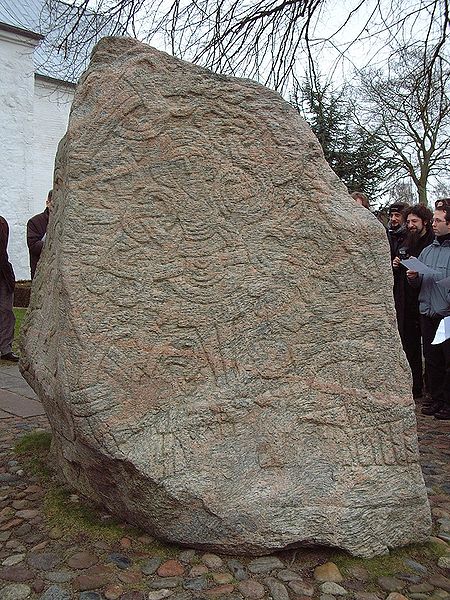Numbers in Germanic paganism
The numbers three, nine, and other multiples of three are significant numbers in Germanic paganism. Both numbers appear throughout surviving attestations of ancient Germanic folklore, in both mythology and Germanic paganism. Along with the number 27, both numbers also figure into the lunar Germanic calendar.
The Stentoften Stone, bearing a runic inscription that likely describes a blót of nine he-goats and nine male horses bringing fertility to the land.
Hávamál is presented as a single poem in the Codex Regius, a collection of Old Norse poems from the Viking age. A scholarly estimate of Hávamál's age dates the poem to between 900 and 1000 A.D. The poem, itself a combination of numerous shorter poems, is largely gnomic, presenting advice for living, proper conduct and wisdom. It is considered an important source of Old Norse philosophy.
"The Stranger at the Door" (1908) by W. G. Collingwood
Billingr's girl watches on while Odin encounters the bitch tied to her bedpost (1895) by Lorenz Frølich.
"Odin's Self-sacrifice" (1908) by W. G. Collingwood.
The younger Jelling stone (erected by Harald Bluetooth c. 970) shows the crucifixion of Christ with the victim suspended in the branches of a tree instead of on a cross.





